
Filter News
Area of Research
- (-) Clean Energy (69)
- (-) Materials (50)
- (-) Supercomputing (38)
- Advanced Manufacturing (4)
- Biology and Environment (17)
- Climate and Environmental Systems (2)
- Computer Science (2)
- Energy Sciences (1)
- Fusion and Fission (5)
- Fusion Energy (5)
- Isotopes (4)
- Materials for Computing (5)
- National Security (12)
- Neutron Science (27)
- Nuclear Science and Technology (22)
- Nuclear Systems Modeling, Simulation and Validation (2)
- Quantum information Science (3)
News Topics
- 3-D Printing/Advanced Manufacturing (22)
- Advanced Reactors (4)
- Artificial Intelligence (7)
- Big Data (10)
- Bioenergy (10)
- Biology (1)
- Biomedical (10)
- Biotechnology (1)
- Chemical Sciences (2)
- Clean Water (1)
- Climate Change (7)
- Composites (1)
- Computer Science (34)
- Coronavirus (14)
- Critical Materials (2)
- Cybersecurity (2)
- Decarbonization (1)
- Energy Storage (19)
- Environment (22)
- Exascale Computing (3)
- Frontier (1)
- Fusion (1)
- Grid (7)
- High-Performance Computing (2)
- Isotopes (1)
- Machine Learning (7)
- Materials (2)
- Materials Science (34)
- Mathematics (2)
- Microscopy (6)
- Molten Salt (1)
- Nanotechnology (13)
- National Security (1)
- Neutron Science (17)
- Nuclear Energy (6)
- Physics (8)
- Polymers (6)
- Quantum Science (11)
- Security (1)
- Summit (14)
- Sustainable Energy (22)
- Transformational Challenge Reactor (4)
- Transportation (14)
Media Contacts
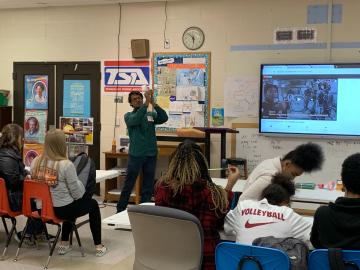
“Engineering is about building things to help others.” Before diving into a longer explanation, that’s how Singanallur “Venkat” Venkatakrishnan, an electrical and computer engineer ORNL, described engineering to students at Northwest Middle School.
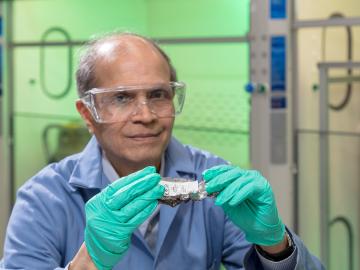
Three technologies and one commercialization program developed at the Department of Energy’s Oak Ridge National Laboratory have won National Technology Transfer Awards from the Federal Laboratory Consortium.
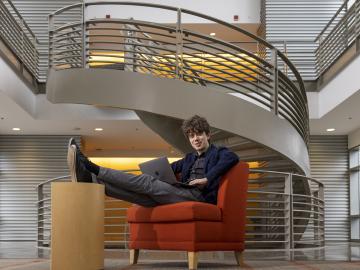
Joe Paddison, a Eugene P. Wigner Fellow at the Department of Energy’s Oak Ridge National Laboratory, believes there’s more information to be found in neutron scattering data than scientists like himself might expect.

OAK RIDGE, Tenn., Feb. 27, 2020 — Researchers at Oak Ridge National Laboratory and the University of Tennessee achieved a rare look at the inner workings of polymer self-assembly at an oil-water interface to advance materials for neuromorphic computing and bio-inspired technologies.

Scientists at the Department of Energy’s Oak Ridge National Laboratory have developed a new method to peer deep into the nanostructure of biomaterials without damaging the sample. This novel technique can confirm structural features in starch, a carbohydrate important in biofuel production.
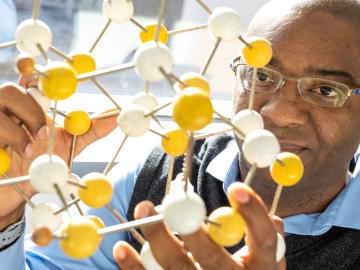
Valentino (“Tino”) Cooper of the Department of Energy’s Oak Ridge National Laboratory uses theory, modeling and computation to improve fundamental understanding of advanced materials for next-generation energy and information technologies.

We have a data problem. Humanity is now generating more data than it can handle; more sensors, smartphones, and devices of all types are coming online every day and contributing to the ever-growing global dataset.

Each year, approximately 6 billion gallons of fuel are wasted as vehicles wait at stop lights or sit in dense traffic with engines idling, according to US Department of Energy estimates.
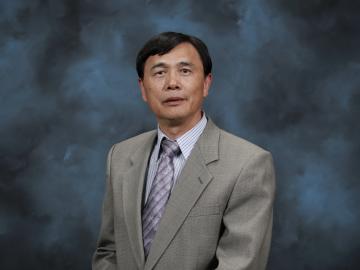
Baohua Gu, a senior research scientist in the Environmental Sciences Division at the Department of Energy’s Oak Ridge National Laboratory, has been elected fellow of the Geochemical Society and the European Association of Geochemistry.

OAK RIDGE, Tenn., Feb. 19, 2020 — The U.S. Department of Energy’s Oak Ridge National Laboratory and the Tennessee Valley Authority have signed a memorandum of understanding to evaluate a new generation of flexible, cost-effective advanced nuclear reactors.


